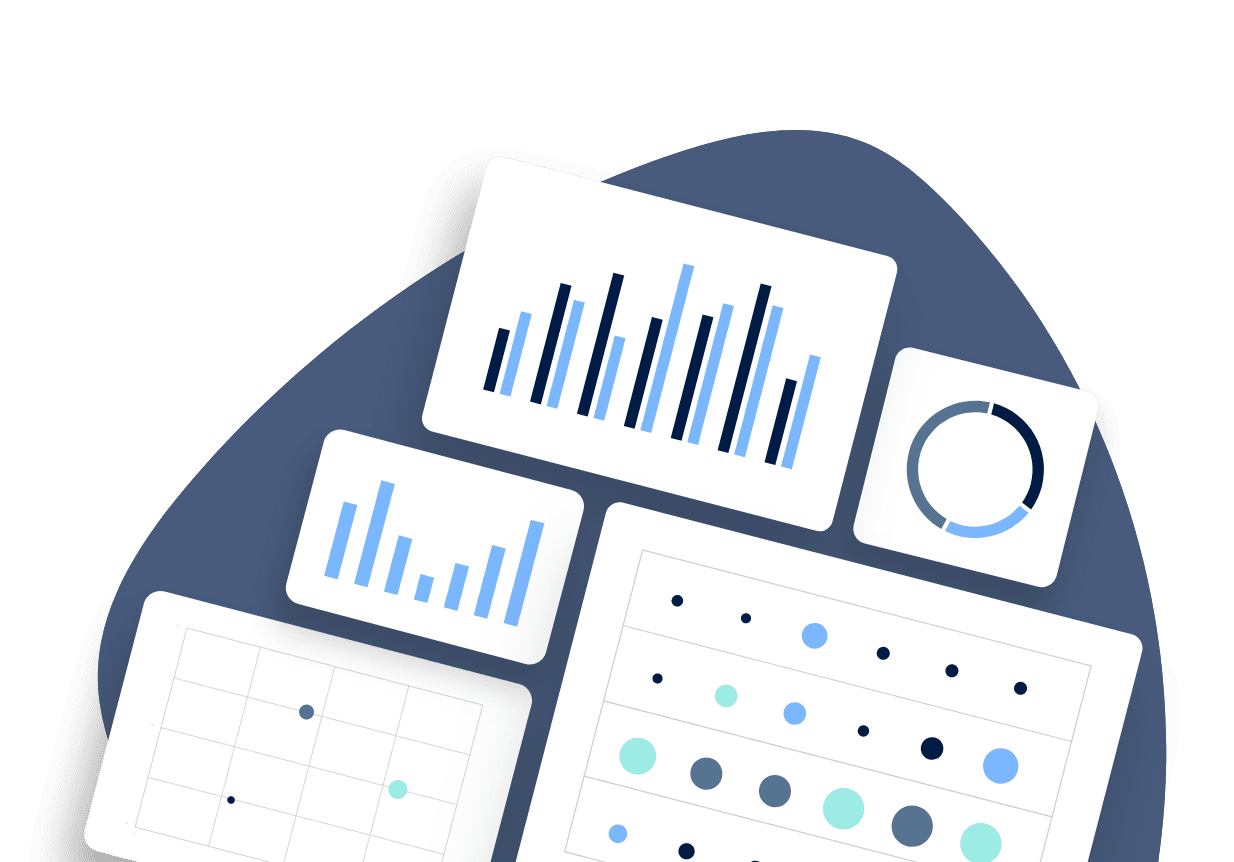In the digital era, social media has become an indispensable tool for businesses to connect with their audience. However, merely being present on social platforms is not enough. Understanding how well your content engages your audience is crucial for success. This is where benchmark social media engagement comes into play.
Benchmark Social Media Engagement Tools

A variety of tools and techniques are available for benchmark social media engagement effectively.
1. Overview of benchmarking tools
Tools like AIM Insights, Hootsuite, and Buffer provide comprehensive analytics dashboards that track engagement metrics across multiple platforms.
2. Techniques for effective benchmarking
Effective benchmarking involves setting clear objectives, selecting relevant metrics, and comparing performance against industry benchmarks and competitors.
Interpreting Benchmark Data
Once benchmarking data is collected, it’s essential to interpret the results accurately to derive actionable insights.
1. Analyzing benchmarking results
Identify trends, patterns, and outliers in the data to understand what’s working and what’s not in your social media strategy.
2. Adjusting strategies based on insights
Use benchmarking insights to refine content strategies, optimize posting schedules, and enhance audience engagement.
Understanding Social Media Engagement Metrics
Social media engagement metrics encompass likes, shares, comments, and other interactions with your content. These metrics provide valuable insights into how your audience perceives and interacts with your brand. Benchmarking these metrics against industry standards and competitors allows businesses to gauge their performance effectively.
1. Types of engagement metrics
Engagement metrics can be categorized into quantitative (likes, shares, etc.) and qualitative (sentiment analysis, brand mentions, etc.). Both types provide valuable insights into audience behavior and preferences.
2. Importance of benchmarking
Benchmarking social media engagement metrics helps businesses set realistic goals, track progress, and identify areas for improvement. It also provides valuable insights into industry trends and competitor strategies.
Choosing the Right Social Media Platforms
Not all social media platforms are created equal. Each platform caters to a unique demographic with distinct engagement behaviors. Therefore, it’s essential to choose the right platforms based on your target audience and business objectives.
1. Identifying the target audience
Understanding your target audience’s demographics, interests, and online behavior is crucial for selecting the most effective social media platforms.
2. Platform-specific engagement metrics
Different platforms have different engagement metrics. For example, Instagram focuses on likes and comments, while LinkedIn emphasizes professional networking and content sharing.
Best Practices for Improving Social Media Engagement
Creating engaging content and fostering meaningful interactions are key to improving social media engagement.
1. Content creation strategies
Craft compelling and visually appealing content that resonates with your target audience’s interests and values.
2. Community engagement tactics
Build relationships with your audience by responding to comments, initiating conversations, and actively participating in relevant discussions.
Future Trends
As social media platforms evolve and new technologies emerge, the landscape of engagement benchmarking is expected to undergo significant changes.
1. Emerging trends and technologies
AI-driven analytics, augmented reality filters, and influencer marketing are among the emerging trends shaping the future of social media engagement benchmarking.
Case Study: Social Media Engagement Optimization for a Global Lifestyle Brand
In this digital age and the increase in social media and digital platforms, engagement has become a very important metric. As the brands recognized the importance of engagement and how it is the channel to build trust with the customers. So, a global lifestyle brand leverages social media engagement to optimize its digital content strategy. To be able to improve it to achieve better results, and enhance the relationship with customers. As the brand was having a large number of followers across the different platforms, it wasn’t getting the expected interaction. So the brand decided to evaluate its social media and identify the areas of improvement. To be able to build a better strategy for enhancing performance.
The Challenge
The brand primary challenge was to understand the changes that is happing in the engagement across the different platforms and types of content. They wanted to know the reason behind getting high engagement on some posts and another get lower engagement. To be able to find the best strategy to enhance the engagement and increase it.
Benchmarking Tools and Techniques
To address all these challenges, the brand adopted a variety of benchmarking tools to track and analyze the social media engagement. To ensure the benchmarking strategy, the brand started by setting up clear goals. Including increasing the engagement by 20% in the next quarter. They selected relevant metrics, including likes, comments, shares, and sentiment analysis, to help in the content tracking. The brand also tracked the competitors and compared their performance to theirs.
Interpreting the Data
After collecting all the data and insights, the brand started in analysis phase for the insights.
- Analyzing Benchmarking Results
They found out that there was a type of content that the audience was engaging with more. Which was the influencer’s collaboration and the behind-the-scenes, which was getting more engagement than the traditional products’ content. By analyzing the sentiment they found out that the audience were interacting with lifestyle drieven content more than the traditional content.
- Adjusting Strategies Based on Insights
Based on these insights, the brand decided to enhance its strategy. They depended more on the lifestyle-related posts, and collaborated with more influencers. Also, they optimized the users’ activities on social media and rescheduled their posting times. To be suitable for their customers’ activities, to ensure getting high engagement on their content.
Choosing the Right Social Media Platforms
The brand audience was on different social media platforms, also the engagement differed between each platform.
- Identifying the Target Audience
Based on the analyses, the brand found out that the younger consumers were more active on a visually heavy platform like Instagram. While the older audience was going to LinkedIn to make their decisions. This helped the brand to tailor different content for the different platforms to match the audience’s interests more.
- Platform-Specific Engagement Metrics
The brand also realized that the engagement metrics were different from one platform to another. As Instagram was focusing more on visual content and likes, while LinkedIn focused on shares. This helped to measure the engagement correctly.
Conclusion
In conclusion, benchmark social media engagement is a vital component of any digital marketing strategy. By understanding and benchmarking key metrics, businesses can gain valuable insights, optimize their social media presence, and stay ahead of the competition. If you’re ready to take your social media engagement to the next level, consider requesting a demo from AIM Technologies. Our innovative solutions can help you analyze, track, and optimize your social media performance with ease.
FAQs
What are the most important social media engagement metrics to track?
- The most important social media engagement metrics to track include likes, shares, comments, clicks, impressions, reach, and conversion rates. These metrics provide insights into how your audience interacts with your content and can help you measure the effectiveness of your social media strategy.
How often should I benchmark my social media engagement?
- The frequency of benchmarking your social media engagement depends on your business goals, industry trends, and the level of activity on your social media platforms. As a general guideline, consider benchmarking your social media engagement at least once a month to track performance over time and make informed decisions about your content strategy.
Can benchmarking help me identify industry trends?
- Yes, benchmarking can help you identify industry trends by comparing your social media performance against industry benchmarks and competitors. By analyzing trends in engagement metrics, content types, and audience behavior, you can gain valuable insights into emerging trends and adjust your strategy accordingly to stay competitive.
Are there any free tools available for social media engagement benchmarking?
- Yes, there are several free tools available for social media engagement benchmarking, including Google Analytics, Facebook Insights, Twitter Analytics, and LinkedIn Analytics. These tools provide valuable data on audience demographics, engagement metrics, and content performance, allowing you to track and analyze your social media presence effectively.
How can I use benchmarking data to improve my social media strategy?
- You can use benchmarking data to improve your social media strategy by identifying strengths and weaknesses in your current approach, understanding audience preferences and behavior, and gaining insights into competitor strategies. By analyzing benchmarking data, you can make informed decisions about content creation, posting schedules, audience targeting, and engagement tactics to optimize your social media performance and achieve your business objectives.




